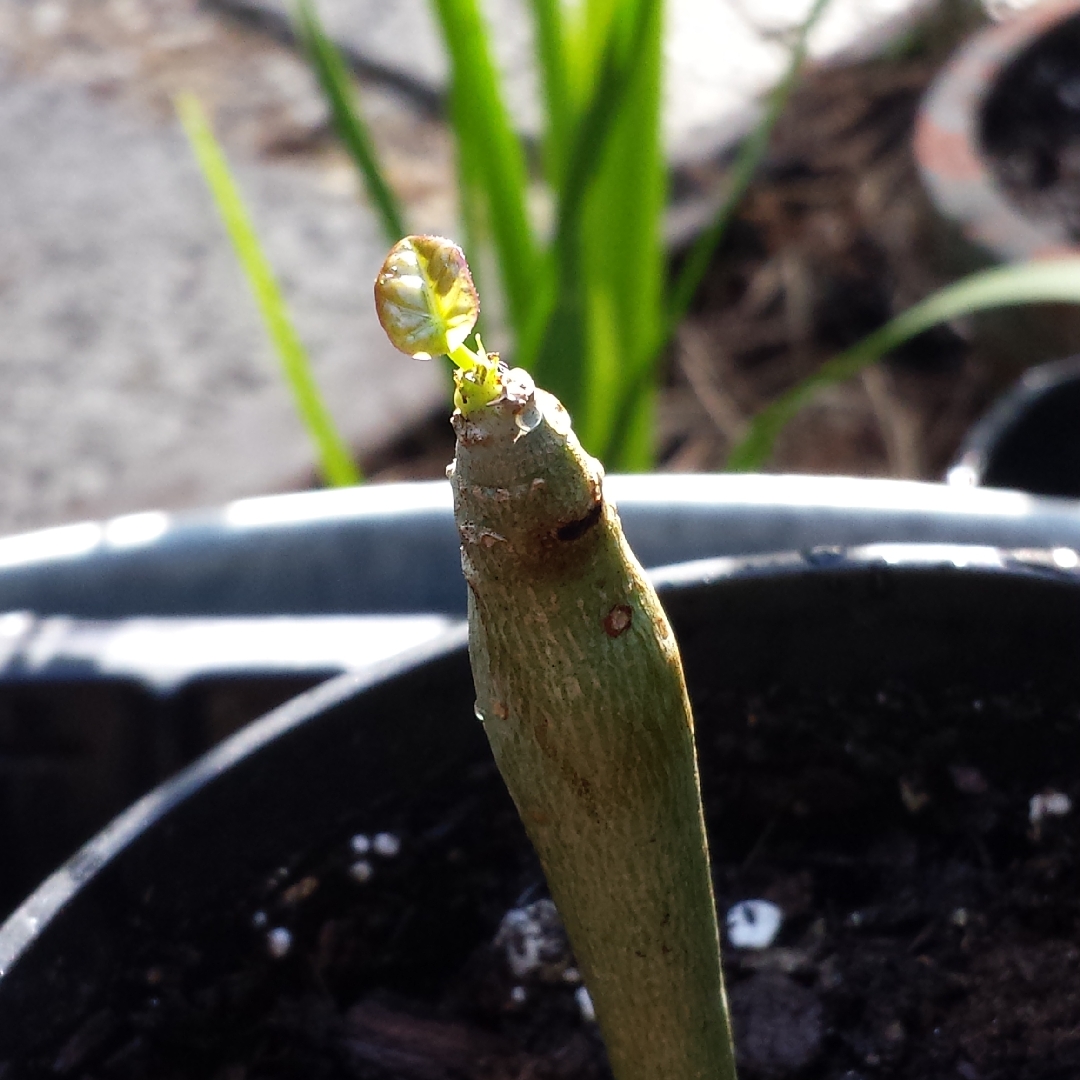
Jatropha Podagrica
Gout Plant
Jatropha is a deciduous or evergreen, succulent shrub or small tree. The trees can grow up to 6m. tall. It has leathery oval leavesThe tree has many uses, and is cultivated in tropical areas for food, medicinal uses, biofuel and as living fences and hedges WARNING: all parts of the plant are purgative or toxic. Jatropha podagrica is a tropical, frost-sensitive, succulent shrub, that has a swollen, bottle-shaped, knobbly stem and waxy-looking leaves. It has small red flowers that look like coral.
Contributed by @treefrog44
-
Full sun to partial shade
-
Occasional watering
-
A little frost hardy: 32F (0°C)
-
All soil conditions
Common name
Gout Plant
Latin name
Jatropha Podagrica
type
Flowering shrubs or trees
family
Euphorbiaceae
ph
5.5 - 8.5 Acid - Neutral
Plant & bloom calendar
-
Best time to plant
full grown dimensions
 0.75 M
1.00 M
0.75 M
1.00 M
Jatropha Podagrica
Jatropha is a deciduous or evergreen, succulent shrub or small tree. The trees can grow up to 6m. tall. It has leathery oval leavesThe tree has many uses, and is cultivated in tropical areas for food, medicinal uses, biofuel and as living fences and hedges WARNING: all parts of the plant are purgative or toxic. Jatropha podagrica is a tropical, frost-sensitive, succulent shrub, that has a swollen, bottle-shaped, knobbly stem and waxy-looking leaves. It has small red flowers that look like coral.
Planting
From Early Spring TO Late Spring
Dig a hole is twice the size of the root-ball, and, if the soil is sandy add plenty of composted material to increase water-retention. When back-filling add half the soil, then water thoroughly before adding the rest of the soil, then water again. Water the newly-planted shrub or tree daily for a week, then every other day for two weeks, to help the plant establish
Propagating by cuttings
From Late Summer TO Early Autumn
Take semi- ripe cuttings from this season's growth in Autumn. Cut neatly, just below a leaf node, a 5" approx. piece of a healthy shoot that has soft growth at the tip. pinch out the growing tip, and cut off the bottom leaves. Dip the bottom of the cutting in hormone rooting powder, and carefully place in a pot of cutting compost with the leaves just above the level of the compost. Water, label, cover with a polythene bag, and place in a warm, bright place, out of direct sunlight. Take the polythene bag off periodically for a while for ventilation (at least twice a week)























